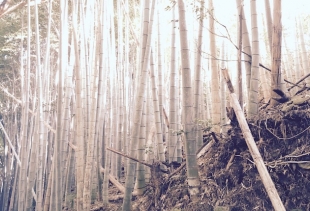» archive blog
-
Carnal, issue 0 of Parterre de Rois
A new magazine in Milandate: 18-07-2013
-
Interview with Nicola Toffolini
A worlds inventordate: 24-04-2011
-
Donne senza uomini.
Installazione multimediale di Shirin Neshatdate: 01-03-2011
common good than the good from themselves? Journey in Italy: old and new art patrons
Art bonus, Friends of the Museums, corporate membership
Museum friends? Corporate members? Local fund raising?
We’ve already written and we’ve already researched the topics for many and diverse papers and magazines but today is sharp and worth to come back to the topic either for who read us in the years and is informed and for who did not and expect to understand which are the novelties, at least in Italy, after the introduction of the Art Bonus (2014), the last law to be approved circa art and institutions (and landscape) patronising.
Art Bonus allows the 65% tax deduction for each donation to cultural institutions (with some limitations, also related to donations to live performance institutions) and on the Italian website of the project are listed, in real time, how many (around 5400 until today) and which projects have been using this deduction option. It is interesting to read (even if the website is only in Italian) how the projects differentiate per shape, size and especially for their localisation.
We can for sure say that Art Bonus differs from any other intervention in this field (do you remember the perverted Arcus?) because it is not temporary in the Italian balance and even if with all its limitations is a solid tool in the hand of fund raisers and of institutions since the 2016, when the government declared it will be a ‘forever’ granted option (at the moment…). Of course the Art Bonus deducts only interventions to sustain culture after 2014. On the other (dark) side, the new law erases all the previous ones, included the micro-donations, and excluded the long term financing of the MIBACT (Italian Culture Ministry) ex article 100 of TUIR.
These are, now, the tools and starting from here every museum or foundation or cultural company has to prepare its financial years by concurring with many and different ‘enemies’, that are, often, their …donors!
Many patrons sensitive to arts and culture got skilled in the last times and moved on the idea to create their own foundations – either in house or independent – either to be safe in their consolidating perimeter (especially when it comes to manage big art collections often to separate their destinies from the corporate one) and to use (not everyone but many) higher budgets to be declared as ‘representational expenses’ that are more cost-deductive according to Italian accountant standards (and, moreover, can be used also abroad, while the other tools less and sometimes not).
If we come to evaluate the different territories that compose Italy, and if we come to speak of Milan (North and Centre Italy are more active), here we see that many patrons - also holding their corporate museums, their art collections and their other cultural programs whose rich calendars are superior to any other one, for sure to any other public museum ones – continue to support, but only excellent institutions. It is the case of Triennale Design Museum that is a bit better after the previous management left. Its ‘Friends of the Museum’ is a very lively association that in only one year of activity and (new) life, produced an interesting income and also brought new companies in the middle of the crowded scene of Italian design: 250.000 euro collected by 170 ‘friends’ in one year.
This charity is different from many other friendships of museums because its gravity centre is not only relative to the (even if wide) Triennale perimeter but includes also visits and interaction with other collections and funds, events and house-museums of the entire territory. Given the place we are, it is very valuable because we speak of Foundations of architects and designers and other venues and actors that are very qualified and extended. This charity can count also on many ‘friends’ who are companies and not only on individual members.
Almost all the Italian museums are also active, not everyone from the same period and not everyone with the same choices, toward membership programs that relate to individuals and companies. For instance, in Venice, there is Peggy Guggheneim Collection, the modern art collection of the American dealer and patron that is still located in her renewed house on the Grand Canal. According to the Italian law, this is a Foundation, i.e. a private law subject inscribed at the Venice Court. It is ‘son’ of the US Guggheneim Museum, whose director Mr Armstrong selects the cultural calendar and the general course. The local management (a longstanding directorship by Mr Philip Ryland, who recently resigned and the new director is not yet appointed) is selecting the short-term shows and the on-site direction.
Guggenheim Intrapresae, the PGC local corporate membership, has been founded around 25 years ago after the idea of an Italian pr, Michela Bondardo (she was also promoting few books on how to deduct from taxes the cultural promotions, the sponsorship and the art patronizing that were published within the national Premio Impresa Cultura). Since then, many Italian leading companies financed the PGC by granting the institution a fixed plafond (around 22.000 euro) for the whole activity. And they receive, in exchange, a package of benefits (including also the use of the stunning Venier dei Leoni palace on the Grand Canal for corporate events and the visit from the employees to the collection).
Guggenheim Intrapresae recently told its history by gathering some of its members in an Italian business school: they told their experiences as ‘culture makers’ also because each of these companies is very active in its territory to sustain arts and culture in different ways according to their histories and specific talents.
BSI, a Swiss bank that is long term supporting the Italian branch of the American Museum, told that what is in common between them and Guggenheim is the ‘passion for modern and contemporary art and of course the passion to back the culture – that should be constituting every company DNA, not only theirs. Without culture there is no society, without society there is no entrepreneurship and this must become a virtuous circle instead of a vicious one’ (Gabriele Corti).
Wool Italian company Ermenegildo Zegna (that has its own site specific art program, All’Aperto, where the wool company is producing via their Art Foundation Zegna per l’Arte) told that two were, in particular, the reasons for which they decided to join Intrapresae. The Peggy’s and Ermenegildo’s (grandfather and founder) birth dates are close: 1896, 1892. And both were ‘artists’ themselves. Ermenegildo, specifically, was creative and unique in shaping a place around a wool mill. A village that was not existing before.
Creativity, passion and innovations were the common ground of either Peggy and him, in the same time of the history, in two opposite sides of the planet. And when Ermenegildo was embarking on the Atlantic ferry Rex to sell his wool in US, in the same years Peggy was travelling the ocean in the opposite direction to sell her artists here.
As Peggy was loving to get surrounded by artists, as well was Zegna senior: Otto Maraini has been invited to embellish the mill and so also Ettore Oliviero Pistoletto who was painting a speries on the origin of wool. Until the 500.000 firs planted on the street called Panoramica Zegna. Nowadays, among the art programs Zegna comnay issues, there is also Visible, a joined adventure with Michelangelo Pistoletto where ‘art leaves its field and become something else, by operating outside its original borders’.
Visible will be at Queens Museum on November 4 and 5 2017 by following the motto of one of the past Visible jury chairmen, Charles Esche: ‘common good than the good from themselves’.
Enrico Loccioni, founder of the same name Industrial group, started to work when he was just 19 and he still believes that an enterprise has among its duties the one to seed beauty on its territory, not only because it is good but also because it makes it more attractive and so able to anchor the right talents that are useful to the progress of the company.
‘A company cannot be housed in a place, it has to dwell there. And we have very precise good models in Italy for that, we’ve been taught by the kind of people as the Olivettis: man-nature (territory)-technology.
I like to speak of cultural ‘sharecropping’ when I restore and make safe a riverside in my town. And I like to speak of very long term investment when I founded learning programs for teachers in my territory because we teach to teachers in order to up-bring at its better our future collaborators. Overall, I commit myself to deliver to the future dwellers the place in which I operate better than how I found it’.
Giovanna Forlanelli told about the next programs of Fondazione Luigi Rovati and announced the opening of their new Etruscan Museum in Milan at the end of 2018 in one of their belongings, a stunning building in Corso Venezia 52 (its garden will be also restored and opened for free to everyone, not only to the museum visitors). The restoration is signed by Mario Cucinella, the innovation is the underground exhibition area made in stone layers, the other part of the building will be untouched in its majesty and in its original essence).
The family company (Rottapharm Biotech Srl), an holding, opted for the option for profit/for benefit that has been recently introduced in Italian fiscal law. This adopted choice, still not very common in our country, allows a company to shift resources for a long-term investment and makes the cultural spin-off as always ‘constitutive’ of the original perimeter of the holding via a for benefit committee that designs and manage the cultural program.


